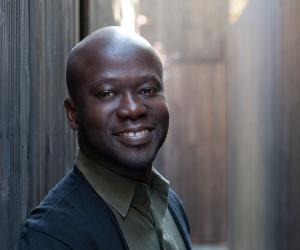Part of the Project

Chronicling the first 10 years of the Design Indaba Festival, the Design Indaba All Stars book serves as a record of the growth of creativity at the cusp of the millennium. It showcases the work of 35 of the most prominent international speakers that Design Indaba Conference has hosted over the years, selected with longevity in mind. Looking back, the designers' insights are just as relevant today as they were when the book was published in 2009.
As a historical artefact, the book records the technology, methodology, human needs and cultural values that have driven a dramatically evolving design landscape.
In part one of this series, we have selected some of the best quotes from the interviews featured in the Design Indaba All Stars book. They offer a glimpse into the minds and working methods of some of the greatest practitioners of our times.
Sir Terence Conran, designer
My belief is, simply, that if reasonable and intelligent people are offered something that is well-made, well-designed, of a decent quality and at a price they can afford, then they will like it and buy it. Read Sir Terence Conran's full interview with Design Indaba here.
Stefano Giovannoni, industrial designer
I think we all have to try to be democratic or socialist in the sense of opening things up. That is what avant-garde art attempted, opening up, democratising the context of things. Look at how Pop Art democratised the context of art by using everyday references. Read Stefano Giovannoni's full interview with Sean O'Toole here.
Irma Boom, graphic designer
First off, a book without text is not a book. A book should somehow always contain text. It was simply a fashion to have no text in books. When I design a book I read the text first, the design comes later. The text suggests inspiration and ideas. Read Irma Boom's full interview with Sean O'Toole here.
Shubhankar Ray, global brand director of G-Star RAW
Most of my influences are from worlds that are different to mine: music, social activism, fashion, etc. They make me reconsider and reframe my work. Read Shubhankar Ray's full interview with Sean O'Toole here.
Kenya Hara, graphic designer and curator
Thanks to today’s highly cultivated marketing methods, we are capable of precisely scanning the consciousness and desires of the general public. And so products have become more and more accurate mirrors of the desires of the society or the market. Read Kenya Hara's full interview with Design Indaba here.
Peter Saville, graphic designer
From a business point of view I am my own worst enemy, because I am not motivated by holding onto somebody’s bank account. I am motivated by doing something good, part and parcel of which is doing the right thing. I’ll be honest and say that there is a high degree of ego in there. Read Peter Saville's full interview with Sean O'Toole here.
Ron Arad, product designer
It has to be said the more sophisticated the technology and the better the machine gets, the less machine-like the final product is. And sometimes you look back and you see something the computer is suggesting, and you say 'AH!' Read Ron Arad's full interview with Tom Roope here.
David Adjaye, architect
I believe in the collective human experience but generally I try to find significance – cultural, social and political – in the work that I do abroad. Read David Adjaye's full interview with Don Albert here.
Michael Bierut, graphic designer
Philosophically, I don’t think that the role of all design is to be seen, to scream, ‘Notice me’. A lot of it does its job beautifully when it just kind of runs under the surface of your consciousness. Read Michael Bierut's full interview with Alexander Gelman here.
Christoph Niemann, illustrator and graphic designer
I consider my illustrations the visual equivalent of headlines. A headline has to somehow contain the whole story without getting lost in details. And humour is a terrific tool (even if it is a serious story) to make a reader interested and curious. Read Christoph Niemann's full interview with Design Indaba here.

















